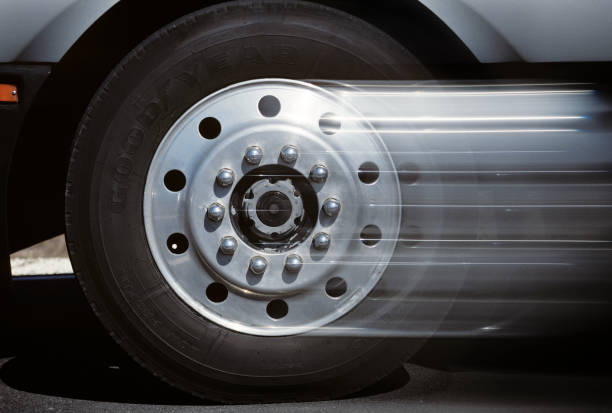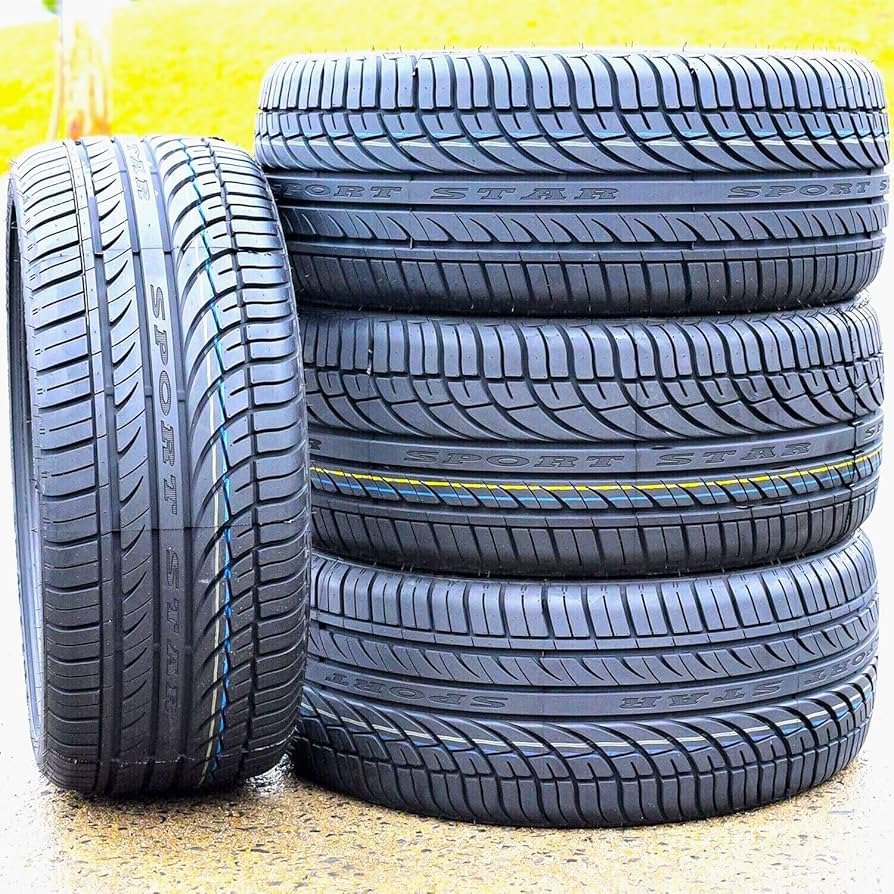Choose tires for high-performance cars by considering tire type, size, and performance ratings. Ensure compatibility with your vehicle specifications.
High-performance cars demand tires that can handle speed, precision, and intense driving conditions. Selecting the right tires involves understanding various factors such as tire type, size, and performance ratings. Summer tires, all-season tires, and track-specific tires offer different benefits tailored to specific needs.
Tire size should match the car’s specifications to ensure optimal handling and safety. Performance ratings, including speed rating and treadwear, provide insights into the tire’s capability and longevity. Carefully evaluating these aspects ensures your high-performance car maintains its agility, safety, and overall driving experience.

Types Of High-performance Tires
Choosing the right tires for your high-performance car is crucial. Different tires offer different advantages. Understanding the types of high-performance tires will help you make the best choice.
Summer Tires
Summer tires are designed for warm weather. These tires offer excellent grip on both dry and wet roads. They have a specialized tread pattern that increases traction and handling. Summer tires are not suitable for cold weather. Their rubber compound hardens in low temperatures, reducing performance.
All-season Tires
All-season tires are versatile and can handle various weather conditions. They offer a balance between performance and comfort. These tires have a moderate tread pattern that provides good traction in both wet and dry conditions. All-season tires can be used throughout the year. However, they may not perform as well as specialized tires in extreme conditions.
Winter Tires
Winter tires are essential for driving in cold and snowy conditions. These tires have a deep tread pattern that improves grip on snow and ice. Winter tires are made from a rubber compound that remains flexible in low temperatures. They provide superior traction in winter weather but wear out quickly in warm conditions.
| Type of Tire | Best For | Not Suitable For |
|---|---|---|
| Summer Tires | Warm Weather | Cold Weather |
| All-Season Tires | Year-Round Use | Extreme Conditions |
| Winter Tires | Cold and Snowy Weather | Warm Weather |
Key Tire Features
Choosing the right tires for high-performance cars involves understanding several key features. These features can significantly affect your car’s handling, speed, and safety. Let’s dive into three critical aspects: Tread Patterns, Rubber Compounds, and Sidewall Design.
Tread Patterns
Tread patterns play a vital role in tire performance. They impact grip, water dispersion, and noise levels.
- Asymmetrical Treads: Good for both dry and wet conditions.
- Directional Treads: Excellent for high-speed driving and water evacuation.
- Symmetrical Treads: Provide a smooth, quiet ride.
Choose the tread pattern that matches your driving style and conditions.
Rubber Compounds
The rubber compound of a tire affects its durability, grip, and performance.
| Type | Advantages |
|---|---|
| Soft Compounds | Better grip, perfect for sports cars. |
| Hard Compounds | Longer lifespan, suitable for long-distance driving. |
Choose the rubber compound based on your driving needs and terrain.
Sidewall Design
The sidewall design impacts the tire’s stability, comfort, and appearance.
- Low-Profile Sidewalls: Provide better handling and a sporty look.
- High-Profile Sidewalls: Offer more comfort and shock absorption.
Consider your preference for comfort versus performance when selecting sidewall design.
Tire Size And Fitment
Choosing the right tires for high-performance cars is crucial. One key aspect is understanding Tire Size and Fitment. This ensures your car performs at its peak while maintaining safety.
Reading Tire Specifications
Tire specifications are printed on the sidewall. Here’s how to read them:
- Width: The width of the tire in millimeters.
- Aspect Ratio: The height of the sidewall as a percentage of the width.
- Construction: Indicates if the tire is radial (R).
- Diameter: The diameter of the wheel in inches.
- Load Index: The maximum load the tire can carry.
- Speed Rating: The maximum speed the tire can handle safely.
Matching Tire To Wheel Size
It’s vital to match the tire size to the wheel size. Incorrect fitment can affect handling and safety. Use this table to understand the fitment better:
| Wheel Diameter (inches) | Recommended Tire Width (mm) | Aspect Ratio |
|---|---|---|
| 15 | 195-225 | 50-65 |
| 16 | 205-245 | 45-60 |
| 17 | 215-255 | 40-55 |
| 18 | 225-265 | 35-50 |
| 19 | 235-275 | 30-45 |
| 20 | 245-285 | 25-40 |
Use the tire’s specifications to ensure a perfect match. This guarantees optimal performance and safety for your high-performance car.
Performance Metrics
Choosing the right tires for high-performance cars can be challenging. Tires affect speed, handling, and safety. Understanding performance metrics is crucial. These metrics help you select the best tires for your needs.
Speed Ratings
Speed ratings indicate the maximum speed a tire can handle. These ratings are critical for high-performance cars. Look for the letters on the sidewall of the tire. Common ratings include:
- Q – Up to 99 mph
- R – Up to 106 mph
- S – Up to 112 mph
- H – Up to 130 mph
- V – Up to 149 mph
- W – Up to 168 mph
- Y – Up to 186 mph
Load Index
The load index shows the maximum weight a tire can support. This is critical for vehicle safety. The index is usually a number from 75 to 105. Higher numbers mean a higher weight capacity. Use the table below to understand the load index better:
| Load Index | Weight (lbs) |
|---|---|
| 75 | 853 |
| 85 | 1,135 |
| 95 | 1,521 |
| 105 | 2,039 |
Utqg Ratings
UTQG stands for Uniform Tire Quality Grading. It includes three components:
- Treadwear – Indicates the tire’s lifespan. Higher numbers mean longer wear.
- Traction – Shows the tire’s ability to stop on wet surfaces. Ratings are AA, A, B, and C.
- Temperature – Indicates the tire’s resistance to heat. Ratings are A, B, and C.
Choose tires with high UTQG ratings for better performance.
Driving Conditions
Choosing the right tires for your high-performance car depends on driving conditions. Different conditions affect how your tires perform. Understand these conditions to make the best choice for your car.
Wet Vs. Dry Conditions
Driving in wet conditions needs special tires. Wet roads can cause hydroplaning. Tires with deep treads help push water away. This gives you better grip on wet roads. Look for tires labeled for wet performance.
Dry conditions demand different tires. Dry road tires have less tread. This means more rubber on the road. It gives better grip and control. Choose tires designed for dry conditions for the best performance.
Temperature Variations
Temperature changes affect tire performance. High temperatures can make tires soft. Soft tires wear out faster. Choose heat-resistant tires for hot climates.
Cold weather makes tires hard. Hard tires have less grip. Winter tires stay soft in cold weather. They give better traction on icy roads. Look for tires marked for winter use.
Some tires work well in all temperatures. All-season tires can handle moderate conditions. They are a good choice for mixed climates.
| Condition | Recommended Tire Type |
|---|---|
| Wet Roads | Deep Tread Tires |
| Dry Roads | Low Tread Tires |
| Hot Weather | Heat-Resistant Tires |
| Cold Weather | Winter Tires |
| Mixed Climates | All-Season Tires |

Tire Maintenance
Maintaining your high-performance car tires ensures optimal performance and safety. Regular tire maintenance can extend the life of your tires. It also improves your driving experience. Below are key aspects of tire maintenance.
Proper Inflation
Proper inflation is crucial for tire health. Under-inflated tires can cause excessive wear. Over-inflated tires can lead to reduced traction. Check your tire pressure monthly. Use a reliable pressure gauge. Follow the manufacturer’s recommended PSI.
Rotation And Balancing
Tire rotation ensures even wear. Rotate your tires every 5,000 to 8,000 miles. Balancing prevents vibrations and uneven wear. Unbalanced tires can affect handling. Visit a professional for tire balancing. Proper rotation and balancing improve tire longevity.
Tread Depth Monitoring
Tread depth impacts your car’s grip on the road. Use a tread depth gauge to measure it. Replace tires with less than 2/32 inch tread. Worn tread can lead to dangerous driving conditions. Regularly monitor your tire tread for safety.
Brand Considerations
Choosing the right tire brand is crucial for high-performance cars. Different brands offer varying levels of quality, performance, and durability. This guide helps you navigate the options.
Premium Brands
Premium brands offer top-notch performance and reliability. These brands include:
- Michelin: Known for superior grip and longevity.
- Bridgestone: Offers excellent handling and comfort.
- Pirelli: Perfect for sporty and high-speed driving.
These brands use advanced technologies for optimal performance. They are perfect for enthusiasts and professionals.
Budget Options
Budget options provide a balance between cost and quality. Consider these brands:
- Hankook: Affordable with decent performance.
- Kumho: Good for everyday driving and moderate speeds.
- Falken: Offers good value for money.
These brands are suitable for those on a budget but still seeking performance.
User Reviews
Reading user reviews offers real-world insights. Look for:
- Performance feedback: Learn about grip, handling, and durability.
- Longevity reports: Understand how long the tires last.
- Comfort opinions: See what users say about ride quality.
User reviews help you make an informed decision. They provide honest opinions from fellow drivers.
Buying Tips
Choosing the right tires for a high-performance car is crucial. The right tires can improve your car’s speed, handling, and safety. This section provides essential buying tips to help you make the best choice.
Where To Buy
Buying tires from reputable stores is important. You can visit authorized dealers for high-performance car tires. Online platforms like Amazon and Tire Rack also offer a wide range of options. Local auto shops may provide personalized service and advice.
Warranty And Return Policies
Always check the warranty offered by the tire manufacturer. A good warranty will cover defects and premature wear. Understand the return policies of the store before purchasing. This will help in case you need to return or exchange the tires.
Installation Services
Proper installation is key to tire performance. Many stores offer installation services. It’s best to get the tires installed by professionals. Some online retailers also partner with local shops for installation.

Frequently Asked Questions
How To Choose A Performance Tire?
Choose a performance tire by considering tread pattern, tire size, speed rating, load capacity, and weather conditions. Research brands and read reviews.
Do High Performance Tires Make A Difference?
Yes, high performance tires improve handling, traction, and braking. They increase driving dynamics and safety, especially at high speeds.
What Tires Are Good For High Speeds?
For high speeds, choose performance tires like Michelin Pilot Sport, Pirelli P Zero, or Continental ExtremeContact. These offer excellent handling and stability.
Are High Performance Tires Worth The Money?
Yes, high performance tires are worth the money. They offer better grip, improved handling, and increased safety.
Conclusion
Choosing the right tires for high-performance cars is crucial. Focus on factors like tread design, size, and durability. Consult experts and read reviews to make informed decisions. The right tires improve your car’s performance and safety. Make smart choices to enjoy a superior driving experience.
Drive safely and confidently.





















